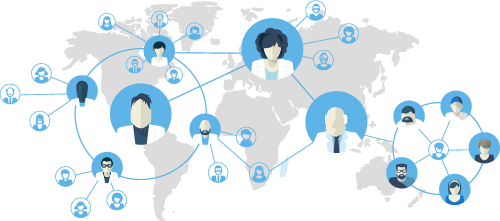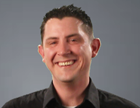Course description
In this course for the CompTIA A+ 1101-1102 exam, we will cover an introduction to computing concepts, how the certification works, and anatomy of the computer.
Prerequisites
This course assumes the user has little to experience with computer hardware or software.
Meet the expert
Patrick Loner has certifications for MCSA, MCSE, MCITP, A+, Network+, Security+, and more. He has been working as a Microsoft Certified Trainer, network administrator, and network consultant for over ten years. He has over a decade of experience working with and teaching about Windows networks with client and server operating systems. He has guided many students toward Microsoft and CompTIA certifications. Most recently, he has worked as a freelance trainer and network consultant specializing in Windows Server 2008 and Microsoft Exchange 2007 and Exchange 2010 implementations, design, and upgrades. Patrick continues to branch out now working with and training on Windows Server 2012, Windows 8, Exchange 2013, and System Center Configuration Manager 2012.
Course outline
Module 1
Personal Computer Concepts (30:50)
- Introduction (00:08)
- Hardware vs. Software (01:19)
- Pc Communication (01:42)
- Hardware Requirements (06:21)
- Binary Numbering System (02:26)
- Comparing Numbering Systems (01:37)
- Demo: Numbering Systems (14:03)
- Personal Computer Concepts (03:03)
- Summary (00:08)
Becoming an IT Professional (16:35)
- Introduction (00:08)
- Becoming an IT Professional (03:06)
- Advancing Your Skillset (04:27)
- Soft Skills (01:34)
- Working with End Users (02:55)
- Dealing with Difficult Customers (02:22)
- End User Communication (01:52)
- Summary (00:08)
Certification Basics (09:35)
- Introduction (00:08)
- Certiciation 101 (03:26)
- Creating a Plan (02:28)
- Certification Exam (03:24)
- Summary (00:08)
Module 2
Motherboards (25:34)
- Introduction (00:08)
- Motherboards (01:26)
- Data Communication (03:43)
- Chipsets (00:44)
- North Bridge (01:15)
- South Bridge (01:18)
- Connector Types (02:51)
- Form Factors (06:09)
- Installing a Motherboard (02:49)
- Replacing Motherboards (02:59)
- Motherboard Compatability (02:00)
- Summary (00:08)
Firmware (21:19)
- Introduction (00:08)
- BIOS and CMOS (02:59)
- UEFI (01:31)
- POST (02:36)
- Configuring BIOS (03:22)
- Fan Speed Considerations (00:38)
- Security Settings (03:27)
- Secure Boot (01:05)
- Demo: Firmware Setings (05:21)
- Summary (00:08)
Power Supplies (14:59)
- Introduction (00:08)
- Power Supplies (02:16)
- Installation Considerations (02:03)
- Powering Drives (01:01)
- Motherboard Power (01:11)
- Choosing Power Supplies (01:28)
- Replacing Piower Supplies (01:53)
- Demo: Power Supplies (04:48)
- Summary (00:08)
Module 3
Central Processing Unit (19:28)
- Introduction (00:08)
- Central Processing Unit (04:28)
- CPU Architecture (04:35)
- Cooling (02:09)
- Liquid Cooling (01:01)
- Demo: CPU (06:56)
- Summary (00:08)
Memory (25:50)
- Introduction (00:08)
- Memory (01:48)
- Memory Units (03:06)
- DDR RAM (03:28)
- Error Recovery (02:00)
- RAM Configurations (02:24)
- Installing RAM (02:57)
- Demo: Examining Memory (09:48)
- Summary (00:08)
Module 4
Storage (01:00:34)
- Introduction (00:08)
- Storage Overview (04:40)
- Drive Architecure (04:58)
- Drive Speeds (01:12)
- SATA (01:43)
- eSATA (02:29)
- Demo: Hard drives (05:06)
- Magnetic Drives (02:18)
- Hard Drive Geometry (03:59)
- Hot Swappable (01:29)
- SSD Overview (03:35)
- Flash Drives (01:33)
- Memory Cards (01:45)
- Optical Drives (01:30)
- Drive Components (01:55)
- DVD (03:45)
- Blu-Ray (03:32)
- Installing Optical Drives (01:32)
- RAID Technologies (02:28)
- RAID Levels (04:31)
- Demo: Configure RAID (06:10)
- Summary (00:08)
Cables and Connectors (18:57)
- Introduction (00:08)
- Expansion Technologies (03:01)
- Serial and Parallel (01:12)
- Universal Serial Bus (01:40)
- USB Versions (01:10)
- USB Classes (00:41)
- USB Connectors and Cables (01:48)
- Demo: USB Cables (03:57)
- Video Cards (05:08)
- Summary (00:08)



